
Armenia’s Artsvanik Tailings Dump: History, Impact, Dangers and Uncertain Future
On the way to Kapan, the provincial capital of Syunik, many tourists mistake Armenia’s largest tailings dump for a beautiful lake, a “blue gem”.
Going closer, however, one sees a gray, hardened waste dump filled with millions of cubic meters of toxic heavy metals. Those approaching soon get a headache because of the stench.
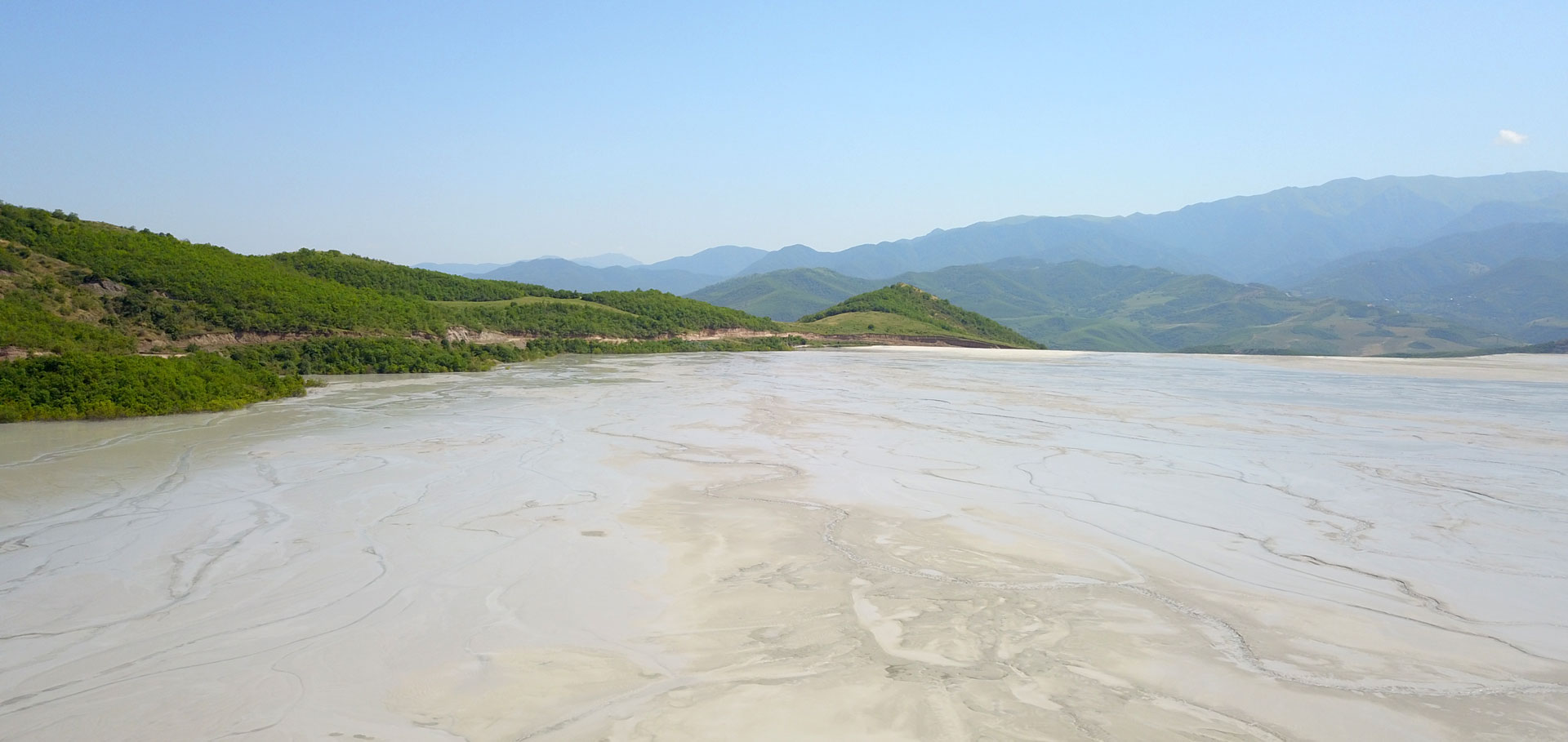
The tailings dump, located 6-7 km from Kapan, was named after the neighboring Artsvanik village.
Before the 1970s, there were settlements and gardens there.
Historical Value of the Area
Historian, director of Kapan Geological Museum Grisha Smbatyan, says Artsvanik is one of the oldest villages in the Kapan area and it’s full of historical and cultural monuments. During archaeological excavations and agricultural and construction works, Bronze Age cultural items - statues, jugs, weapons, and jewelry - were discovered in the village.
Smbatyan says there were two little villages, a cemetery, a chapel, a mill and other structures at the site of the current tailings dump. Archaeologists were particularly interested in the late Bronze Age sculptures of musicians and an encrypted inscription.
The Institute of Archeology and Ethnography of the Armenian National Academy of Sciences has been conducting research in the Artsvanik and neighboring Chapni villages since 2016. Archaeologist Tigran Aleksanyan says their expedition has found monuments of various eras.
Mining Giant
The largest mining company in Armenia, Zangezur Copper Molybdenum Combine (ZCMC), operates in Kajaran, a town 25 kilometers west of Kapan.
It extracts copper and molybdenum from an open pit near the city. The company has been in the top ten of the country's largest taxpayers for years. For the first quarter of this year, the ZCMC paid 6.7 billion drams in taxes and is the third largest taxpayer, with payments amounting to 4.1 billion drams in the same period last year. Overall, the ZCMC paid 41 billion drams in taxes in 2018, ranking second (Grand Tobacco Ltd. paid 42 billion drams).
The ZCMC website reports that the first geological studies in the Kajaran area started back in the 1880s and continued to 1931, when a largescale drilling program began in this area. The mine first started production in 1951.
In 1951-1954 it was operated underground. In 1954-1962, two methods were combined (underground and open pit), and since 1962 it has only used open-pit mining.
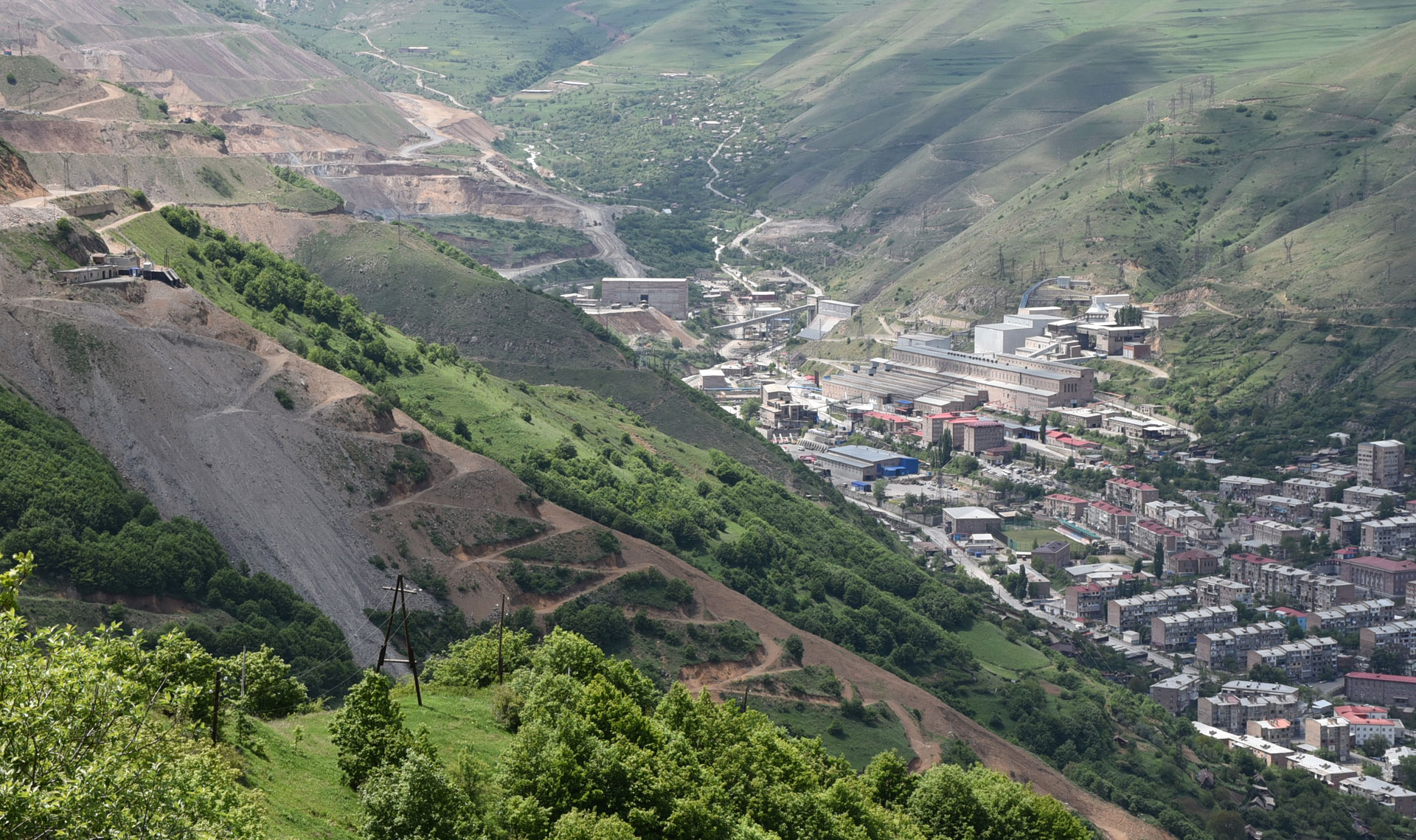
The Armenian Soviet Encyclopedia mentions that in 1976 the Kajaran Copper and Molybdenum Combine and the Kapan Copper Mining Plant merged, becoming the Zangezur Copper and Molybdenum Combine, with copper and molybdenum concentrates containing gold, silver, selenium, tellurium, rhenium, sulfur and other useful components being mined. The combined plants were later separated again, but the Kajaran one retained the name of ZCMC and the other one was named the Kapan Enrichment Plant.
In 2004, the ZCMC was privatized. The current owners are: the CRONIMET Mining GmbH (60% of shares), the Plant of Pure Iron OJSC (15% of shares), Armenian Molybdenum Production Ltd. (12.5%) and Zangezour Mining Ltd (12.5%).
In 1975, it was decided to gradually increase the annual production of the combine. Thus, in 1980 it should have reached 8.5 million tons, in 1985 - 14.5 million and in 1990 - 20 million. However, according to the ZCMC, it was only in 2007 that it managed to reach 12.5 million tons per year.
On the other hand, a 2016 World Bank study, “Strategic Assessment of Mining Sustainability: Armenia”, states that the ZCMC produces around 18.5 million tons of ore annually instead of the permitted 12.5 million.
In December 2016, the ZCMC was authorized to mine 22 million tons of ore per year, of which copper is 0.225 percent and molybdenum - 0.03 percent. The permit is valid until 2041, but it might be extended.
History of the Tailings Dump
The ZCMC previously operated three tailings dumps in the Voghji River basin, which were conserved in the Soviet era. The Artsvanik tailings dump is the fourth and the largest. Built in the early 1970s, it is also located in the Voghji River basin. It’s surrounded by the villages of Artsvanik, Chapni, Sevakar, Achanan and Syunik.
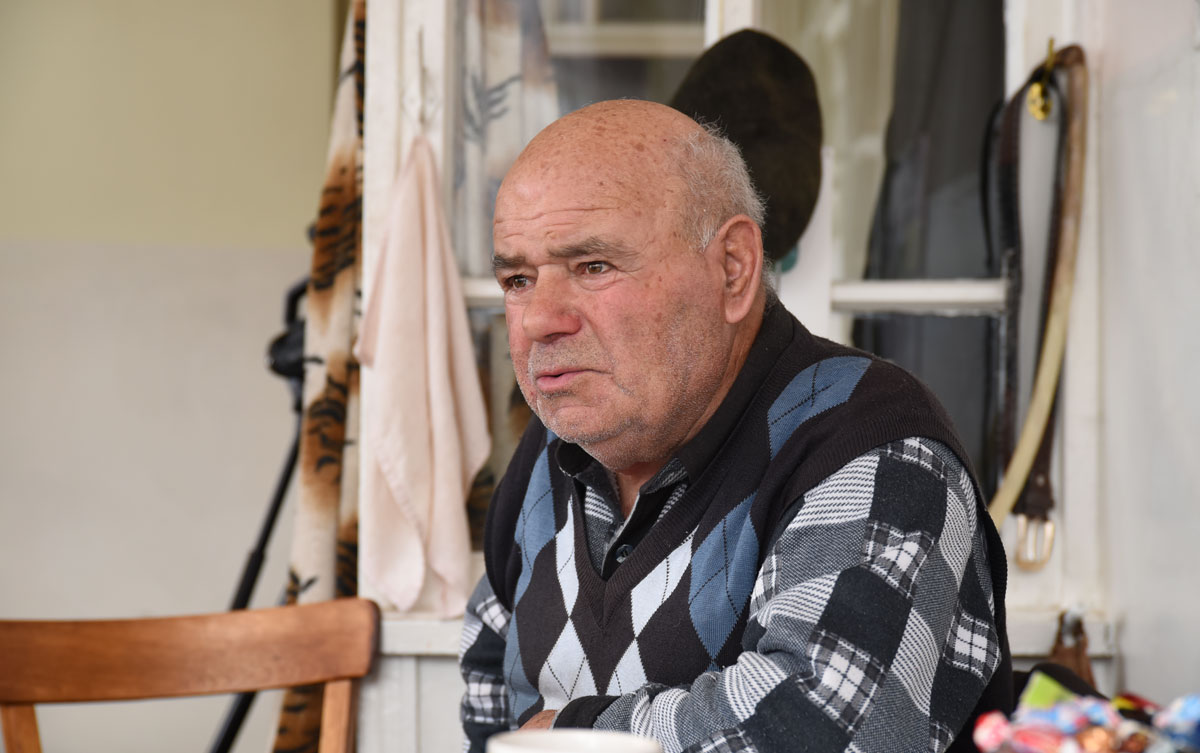
86-year-old Hrant Harutyunyan from Artsvanik used to record the important events of the village.
He says the tailings dump was built in 1972-1973. Harutyunyan, who has lived in Artsvanik since his birth, says that there were underground houses, gardens and orchards in the tailings dump area.
When discussions about the construction of the tailings dump were underway, the main source of income for the village was the land, but residents were promised that the site "would be filled with tailings, covered to become a nice area, and then harvested.”
Harutyunyan says these conversations convinced the people. At the same time, it was planned that the tailings dump should extend to the village cemetery. Today, the distance between the two is only 900 meters.
Environmentalist Hakob Sanasaryan says that in 1978, given the disastrous state of the public’s health, the decline in soil fertility and the overall ecological state of the surrounding area, when the state decided to close the Geghanush tailings dump (operated since 1962 by the Kapan Combine), the LCP started to dump its tailings into the Artsvanik tailings dump. This went on until 2008, when the Geghanush tailings dump was relaunched.
In 2017, Kapan was enlarged to include 31 rural communities, including Artsvanik, Chapni, Sevakar, Achanan and Syunik. Kapan Mayor Gevorg Parsyan told Hetq that 441 hectares of land were allocated for the tailings dump operated by the ZCMC in the administrative territory of the enlarged community. This is equal to 617 football fields.

When the ZCMC was authorized to mine 22 million tons of ore per year in December 2016, there were already 212 million cubic meters of tailings in the Artsvanik tailings dump. As of January, this year, according to ZCMC Director General Mher Poloskov, it reached 239 million cubic meters. In 2016 documents, the ZCMC noted that the tailings dam could be raised to accommodate up to 398 million cubic meters of tailings.
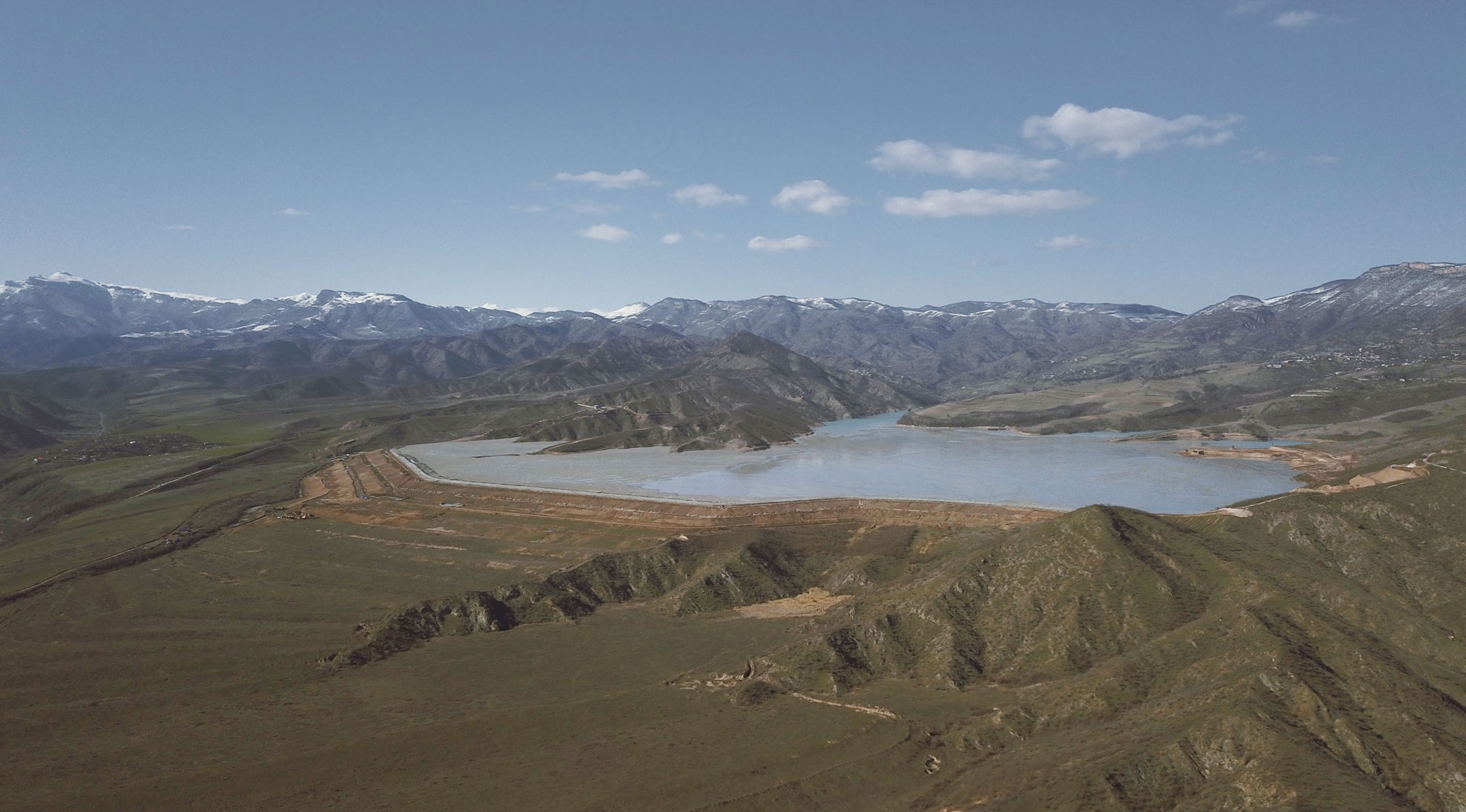
Residents Sound Off About the Tailings Dump
Hrant Harutyunyan recalls that residents used to sell their crop in Kapan. Their produce was in high demand. Now, there is almost no crop to sell.
"There is no crop because the air is dirty. When I sleep at night, I can’t breathe. Everybody complains. The tailings dump strongly affects both vegetation and humans,” says Harutyunyan.
Artsvanik administrative representative Anushavan Harutyunyan, however, has a completely different opinion.
"If it damaged my health, I'd move to Los Angeles. I wouldn't live in the village,” he says.
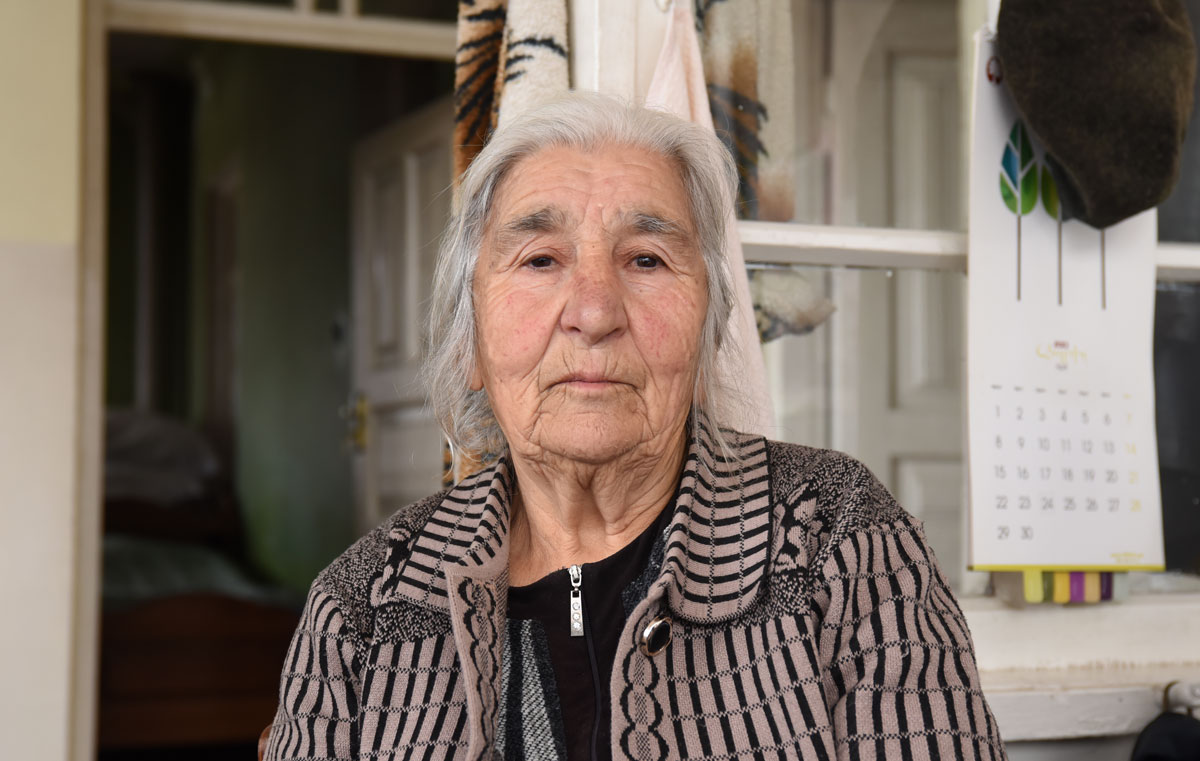
Harutyunyan's wife, 83-year-old Marusya Melkonyan, says that the lower part of the village has to graze cows near the tailings dump because of pastureland scarcity. Some cows even fall into the tailings dump.
“The milk we drink and the cheese we eat are the result of the tailings dump. Neither the young nor the elderly are in good health here,” says Melkonyan.
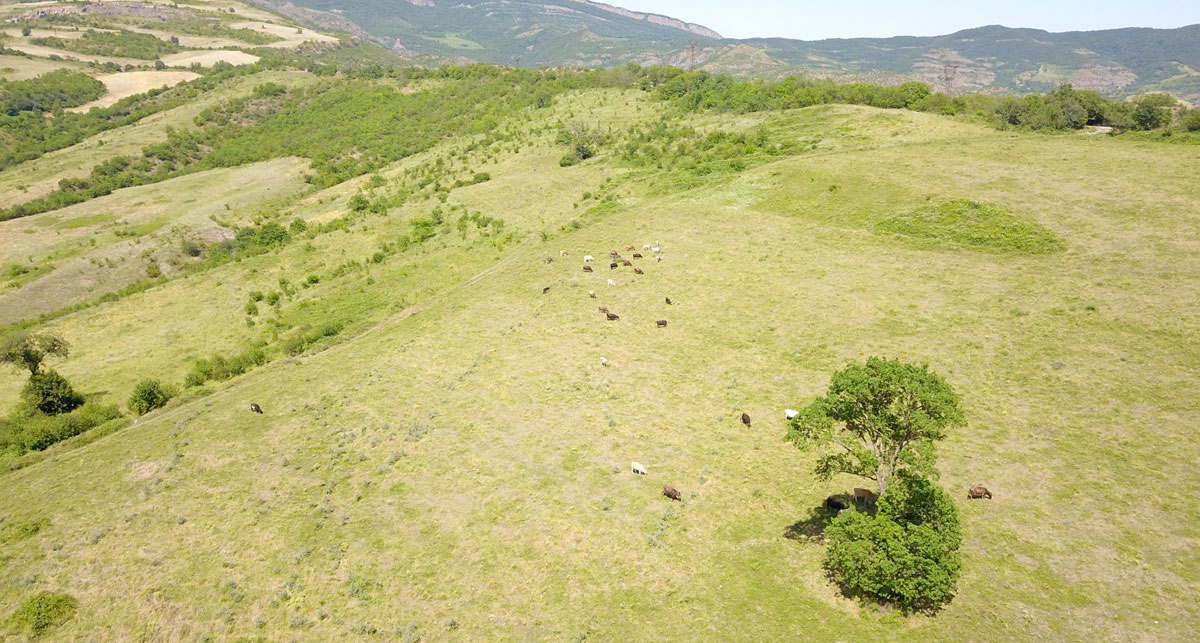
“There is no field in the village either. The cattle come and go along the road. There is no other place. At the top, there is a place far from the dump, and the residents of the upper part take the cattle there, "says Harutyunyan, whose family no longer has livestock. They only raise chickens now.
Residents of nearby villages are fearful when they watch how the tailings dump is getting larger.
“Artsvanik is full. Now, it has to go along Sevakar to the Yegheg village. Will people live here?” asks 85-year-old Razmik Hakobyan, a resident of the neighboring Chapni village.
He says that their village produced a lot of nuts in the past, but the trees have dried up in recent years.
63-year-old Marieta Hakobyan from the same village, whose family has been beekeeping for years, notes that the bees have started to die off in recent years.
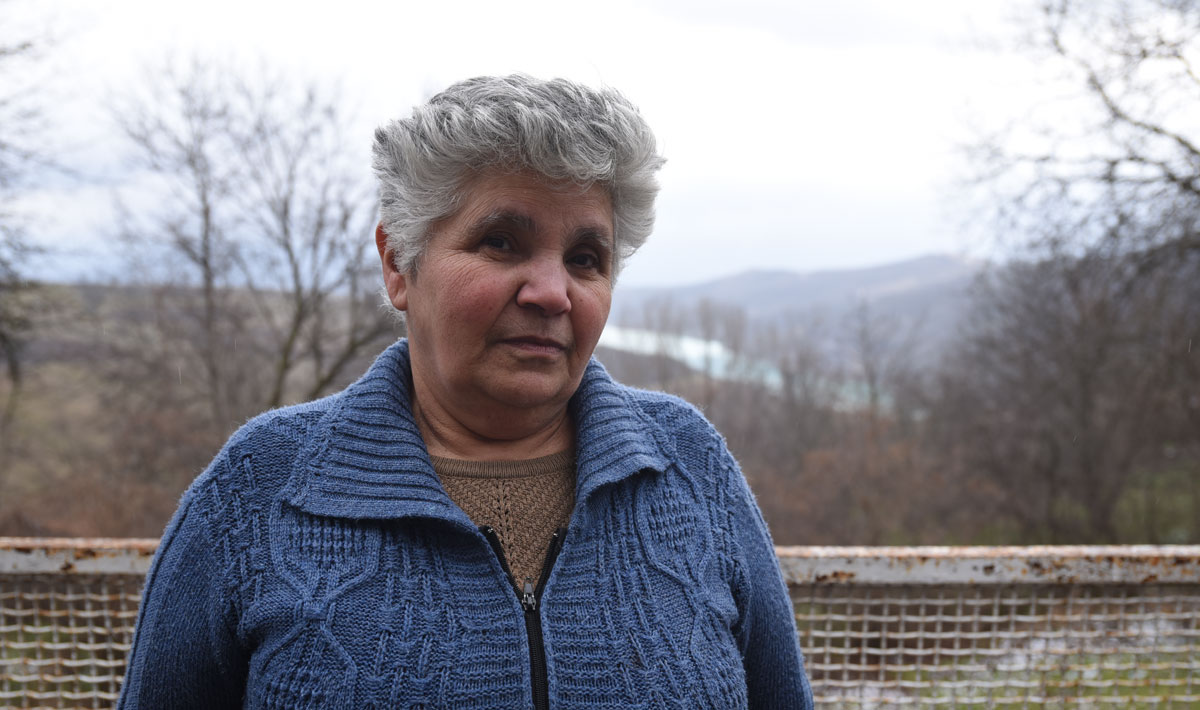
Another resident of the same village, 58-year-old Svetlana Gasparyan, points to the tailings dump, located 1,200 meters away, from the balcony of her house, expressing her fears that if expanded, it would cover their house as well.
She says it’s impossible to sit outside in the evenings given the sharp odor from the tailings dump, and a growing number of mosquitoes.
Gasparyan notes that there are almost no birds around the house, the trees have gradually dried up, and while villagers used to raise all sorts of cattle in the past, now, a few households only keep chickens.
Various Opinions of Environmentalists
Vladik Martirosyan, President of the Kapan-based Khustup Environmental NGO, says the tailings dump cannot have positive effects, since it occupies a very large area, and mainly froth flotation liquids are stored there. At the same time, Martirosyan, who used to work as an engineer at the ZCMC's Environmental Department in 2003-2010 and environmental consultant to Maxim Hakobyan, chairman of the board of directors of the combine, in 2012-2016, stresses that mining is a leading sector in Syunik Province and it’s natural that the soil should be exploited.
Former Chairman of Armenia’s Greens Union Hakob Sanasaryan (the Union has been dissolved) says that every tailings dump impacts land within a radius of 30-40 kilometers.
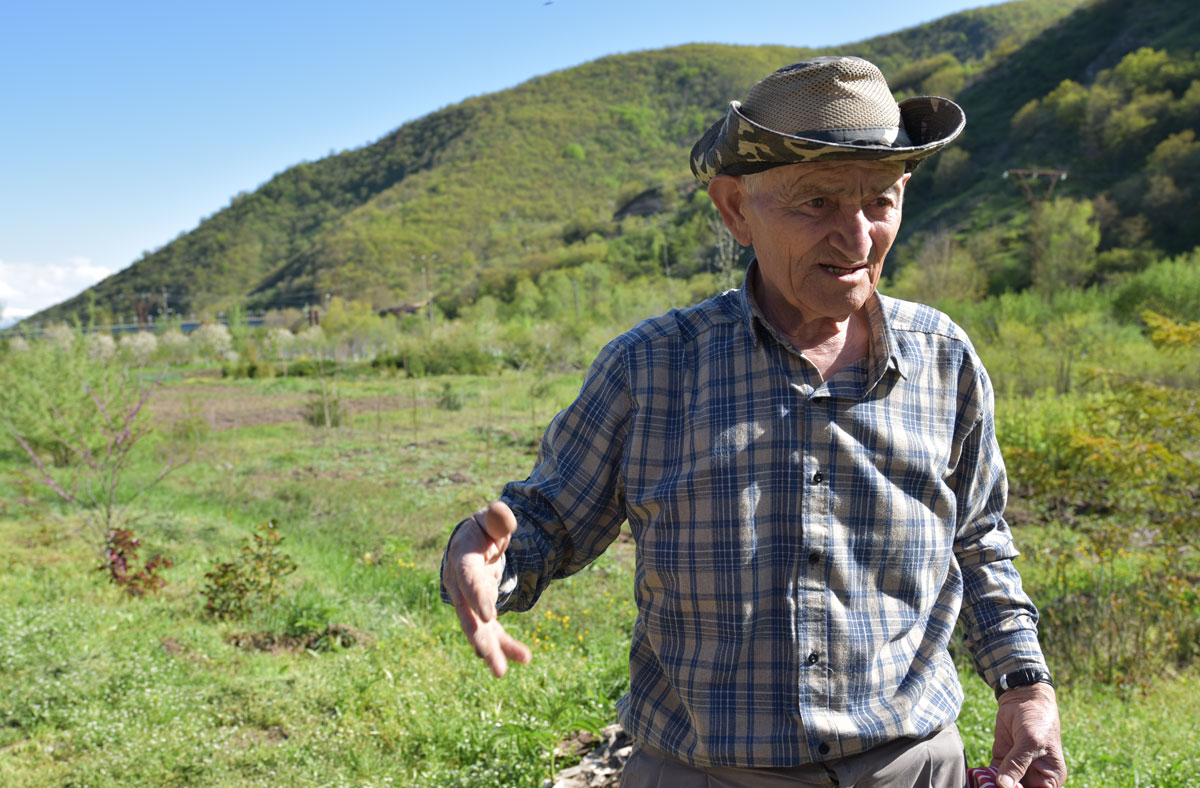
Martirosyan, however, argues that the ZCMC regularly conducts tailings reclamation works.
When its sludge dries, they cover it with a 70-100 cm layer of soil to prevent dust from spreading. According to the environmentalist, the main impact of the tailings dump on nearby villages is the smell.
"I suggested several times to plant a defensive line of plants and trees in the border area, as far as the tailings dump should go, to block the unpleasant smell and protect against dust."
The former employee of the combine says that there is no alternative: the ore is enriched by flotation, and the waste has to be stored somewhere. He stresses the importance of the reclamation to keep the original landscape.

Hakob Sanasaryan, on the contrary, says that mining waste with high concentrations of chemical elements reduces soil fertility by up to 70% and changes the soil structure. In this regard, the environmentalist observes that the concentration of such elements as molybdenum, copper, rhenium, gold, silver, selenium, tellurium, nickel, iron, sulfur, palladium, etc. is quite high in the Artsvanik tailings dump. Sanasaryan notes that there is also uranium in the ZCMC mine areas.
"Uranium is scattered about, and it is practically impossible to extinguish. Where does it go? It goes with the tailings into the soil,” says Sanasaryan, adding that there are international biological studies of all those elements listed, proving that they mainly cause gastrointestinal, liver, bone diseases, cancer, mental illness, coordination disorder, stillbirth, congenital abnormalities, etc.
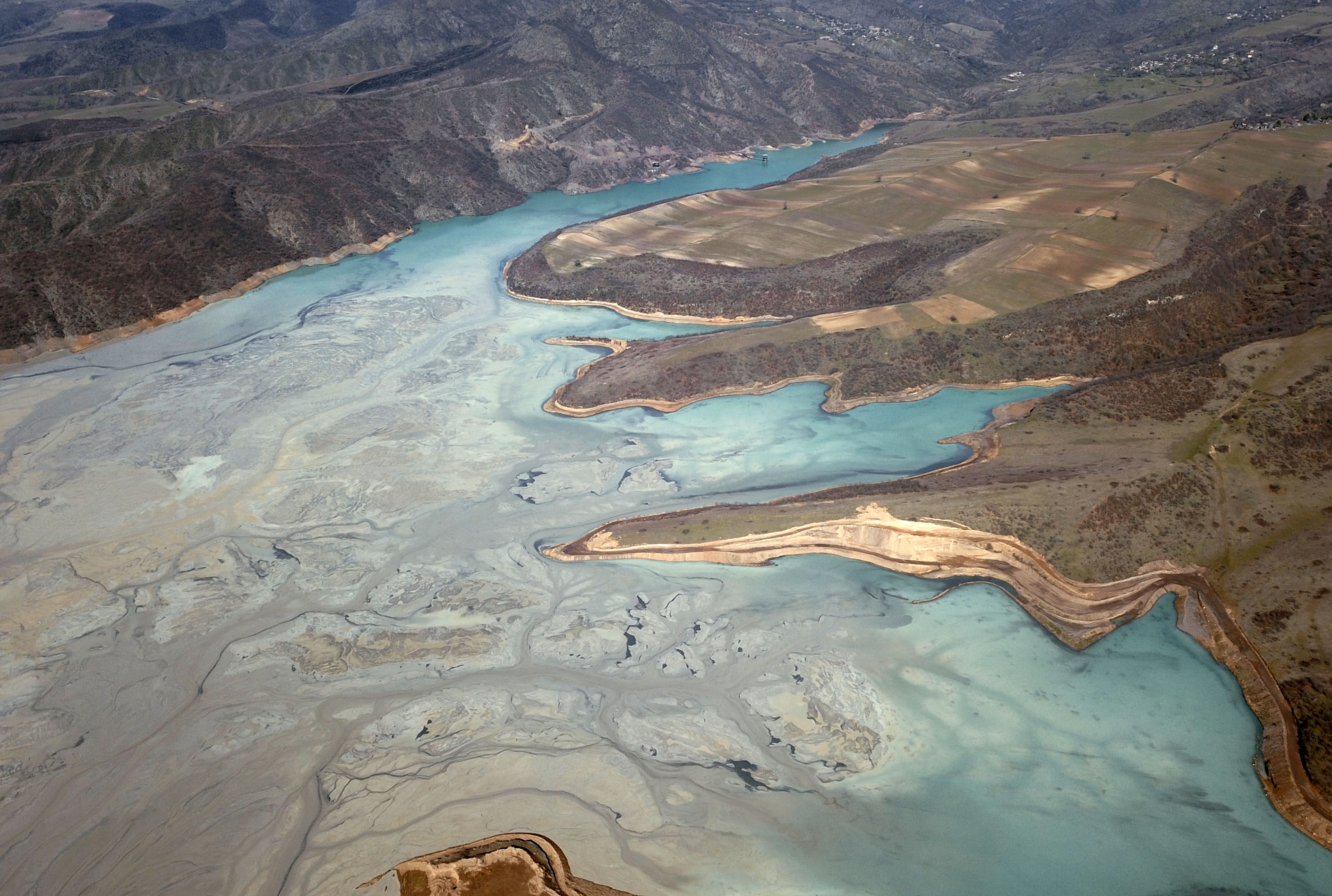
The ZCMC currently produces two types of products: copper ores/concentrates and ferromolybdenum. Hakob Sanasaryan underlines the fact that the precious chemical elements in the ore are not disclosed by mine operators - their volume and how much profit they derive from their sale remains a secret.
Healthcare Issues
There are two enlarged communities in the Kapan area today, Kapan and Kajaran, which include 35 former rural communities.
The area’s permanent population, according to the RA Statistical Committee, was 56,500 on April 1, 2019. The population is served by two medical centers, in Kapan and Kajaran (the first one is the largest health facility in the province).
We asked the Kapan Medical Center to provide us with the number of deaths it has registered in 2014-2019 due to cardiovascular diseases and tumors, as well as new cases of diseases during this period (2019 data are for the first quarter only). It should also be noted that some parts of the population prefer to use the medical centers in Yerevan, so the presented data cannot be considered as complete.
Environmental law specialist Artur Grigoryan said the Ministry of Health (MoH),to his knowledge, has never conducted targeted and serious research to find out the impact of industrial waste on human health.
To check this, we sent a request to the MoH to find out if the ministry has ever studied the impact of the Artsvanik tailings dump on the health of the neighboring village residents.
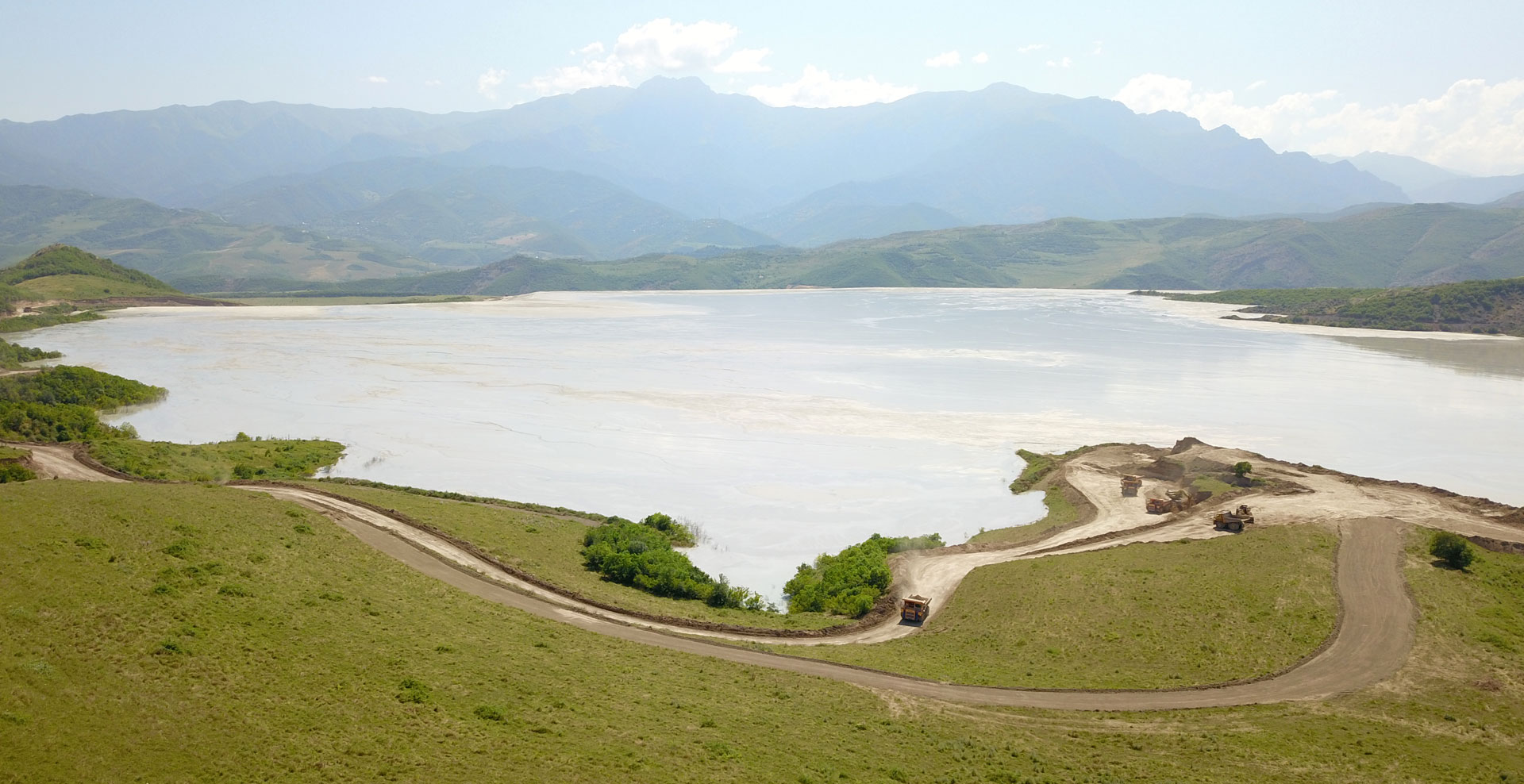
The ministry said a target study has never been carried out.
However, MoH Deputy Secretary Vahe Hakobyan noted that the MoH conducted a study examining copper, zinc, manganese, and arsenic’s potential environmental impact on human health. These are diseases of the circulatory and nervous system, malignant tumors, congenital defects. 2013-2014 data were studied.
Accordingly, the relative index of diseases of the blood circulatory system in Artsvanik village (estimated at 100,000 inhabitants) in 2013-2014 decreased from 708 to 531 (1.3 times), while in Armenia it went from 1860.1 to 1840.1.
In Artsvanik, the relative index of morbidity from nervous system diseases was 177 in 2013 and not recorded in 2014. In Armenia, it was 766.9 and 807.1 respectively. In 2013-2014, there were no malignant tumors and congenital abnormalities recorded in Artsvanik.
"It can be seen from the above that the rates of morbidity with these diseases in the Artsvanik community are significantly lower than those of the average national and provincial indexes," the ministry official said about the years-old data. "According to the WHO data, behavioral risk factors such as tobacco use, alcohol abuse, physical inactivity and unhealthy nutrition may also be the cause of these diseases," he added
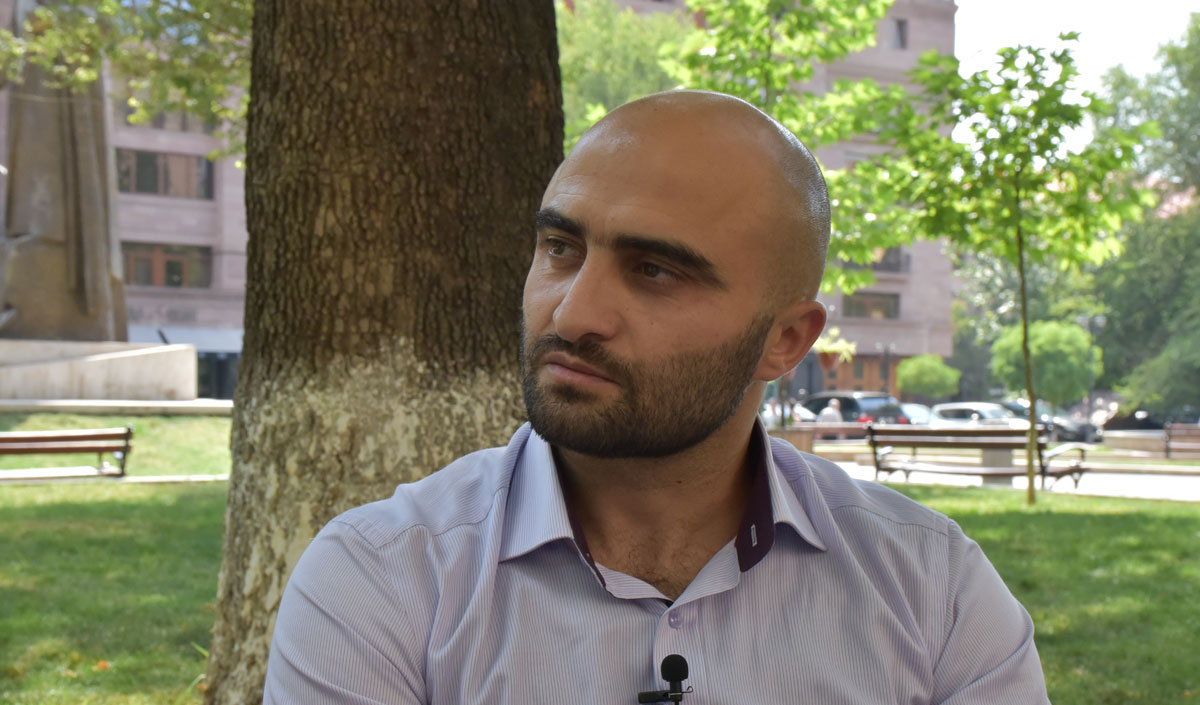
When asked why the government does not carry out any targeted research, Artur Grigoryan responded that there are no archives of professional diseases from the Soviet-era, which implies a tendency to hide the real risks and problems that arise due to unfair waste management, because the government, and especially private companies, have to be held accountable for it, which implies high costs.
On the other hand, Hakob Sanasaryan showed us a letter from 1989 sent by the residents of Artsvanik to the Council of Ministers of the Armenian SSR, the Academy of Sciences, the State Committee for Environmental Protection and the Ministry of Health.
At that time, the tailings dump was much smaller, but residents were already complaining.
“The Artsvanik tailings dump of the Kajaran Copper and Molybdenum Combine has captured the most fertile arable lands of the Artsvanik Sovkhoz and its adjacent land in its monstrous claws. Over the past ten years, we have witnessed violence against the environment that is a crime against us and our generations ... The yields of arable lands and orchards have already declined markedly in the Sovkhoz, which is especially obvious in the vicinity of the landfill. Cattle diseases have increased ... (leukemia, poisoning, other pathological diseases). The forest adjacent to the tailings dump is drying up ... The growth of gastrointestinal, hypertensive, respiratory and peptic ulcer diseases is obvious without any studies ... We consider it an urgent requirement to take measures to stop the tailings dump in the Artsvanik Gorge and to recapture it quickly. "
The above letter was signed by 152 individuals. The State Committee for the Protection of the Environment of the Armenian SSR responded in the same year: “The visual studies revealed that vegetation growing in the areas adjacent to the tailings dump does not suffer from tailings content (lush vegetation grows in the gorges). According to the statistics of the Kapan Regional Sanitary Warehouse, no growth dynamics of livestock diseases has been observed in recent years. The USSR Ministry of Color Metallurgy has carried out detailed and comprehensive research, and no concentrate has been found in the composition of the tailings. There is no danger to the health of the inhabitants of Artsvanik village. The fate of the Artsvanik village and its inhabitants is important to us.”
As we see, both in the past and today, government agencies stand by the large mining company, and complaints of the residents go unanswered.
ZCMC “Donations” to Residents
Since February this year, the ZCMC has given 40,000 drams ($84) a month to each resident of the Artsvanik, Chapni and Sevakar villages north of the tailings dump.
Sevakar residents had been receiving 20,000 drams since November 2018, which has been the reason for the Artsvanik residents' protest. They closed the Yerevan-Meghri highway passing through their village, which actually did the job. Not only did the residents of Artsvanik start receiving money, but also a few people from the village got jobs in the combine.
Unlike the aforementioned three villages, residents of the Achanan and Syunik villages, neighboring the dump from west and south, receive no money from the combine. As a result, the number of permanent residents in Artsvanik, Chapni and Sevakar has grown this year as compared to 2018, while it has decreased in Achanan and Syunik villages.
Local residents do not conceal the fact that money is the reason for the increase in the number.
Anzhela Hovakimyan, a 57-year-old woman from Artsvanik, believes that if it wasn't for the money, the village would now be half empty.
This is also proved by census data given below (to avoid confusion, the 2001 and 2011 data show the population of the Syunik community, not the village. Until 2017, this community consisted of Syunik, Bargushat, Ditsmayri, Khordzor, Sznak villages).
The money is allocated by the Zangezur Copper and Molybdenum Charitable Foundation, created by the ZCMC, which has signed one-year donation agreements with registered and de facto residents of the three villages (residents expect new contracts to be signed after that).
The document states: "... due to limited opportunities to engage in agricultural activities, in order to mitigate the adverse impact on the social situation of the Artsvanik tailings dump beneficiaries actually residing in the surrounding rural areas, this Agreement was concluded ...".
In response to our question why the given money is called a “donation” rather than “compensation”, ZCMC CEO Mher Poloskov replied:
"Such assistance may in no circumstances be classified, qualified or named as compensation, as the term" compensation" is generally a derivative of a delictum relationship, is resulting from certain unlawful (offenses, breach of contractual obligations, etc.) conduct (loss or damage) and aims at restoring violated rights of individuals. In this case, there can be no talk of any illegal activity and consequently losses or damages, and the provision of a certain amount to residents is just one of the manifestations of our company's social policy.”
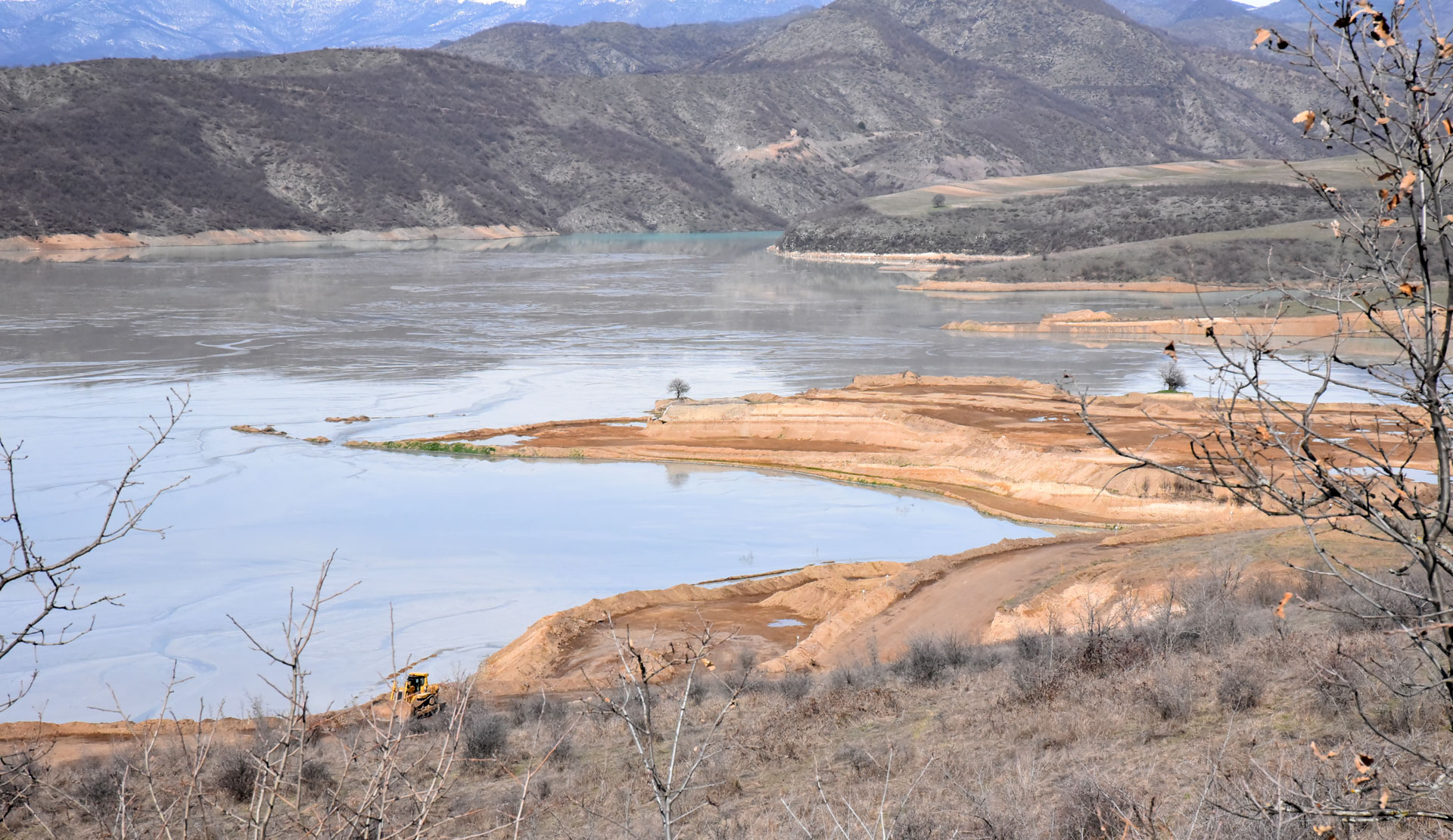
Environmental law specialist Artur Grigoryan says that signing “donation” instead of “compensation” contracts means that mine operators do not acknowledge their work’s harm to people's health.
"We inform that the monthly support provided to residents of Artsvanik, Chapni and Sevakar administrative districts of Kapan is carried out within the framework of the company’s social policy and aims to contribute to the improvement of social conditions of the residents of those areas, development of agriculture and related fields. This program is entirely implemented by the initiative of the company and is not envisaged by any legal act or supporting documents about the right of the company to use the subsoil,” Poloskov’s reply states.
In response to this, Grigoryan says: “The company has signed an entrails-use agreement with the state, which has an annex on social responsibility issues. Is there any such activity foreseen? If not, how can this be assessed? From the legal point of view, there may not be any illegal action, but can this be seen as a bribe given to residents so that residents do not complain too much about the impact of the tailings dump on their health, life and so on. Can it or not?”
A separate clause of the agreement provides: "Beneficiaries acknowledge that the amount provided by this Agreement is a sufficient guarantee to change and improve their unfavorable social situation created by the limited opportunities to practice agriculture in their actual place of residence."
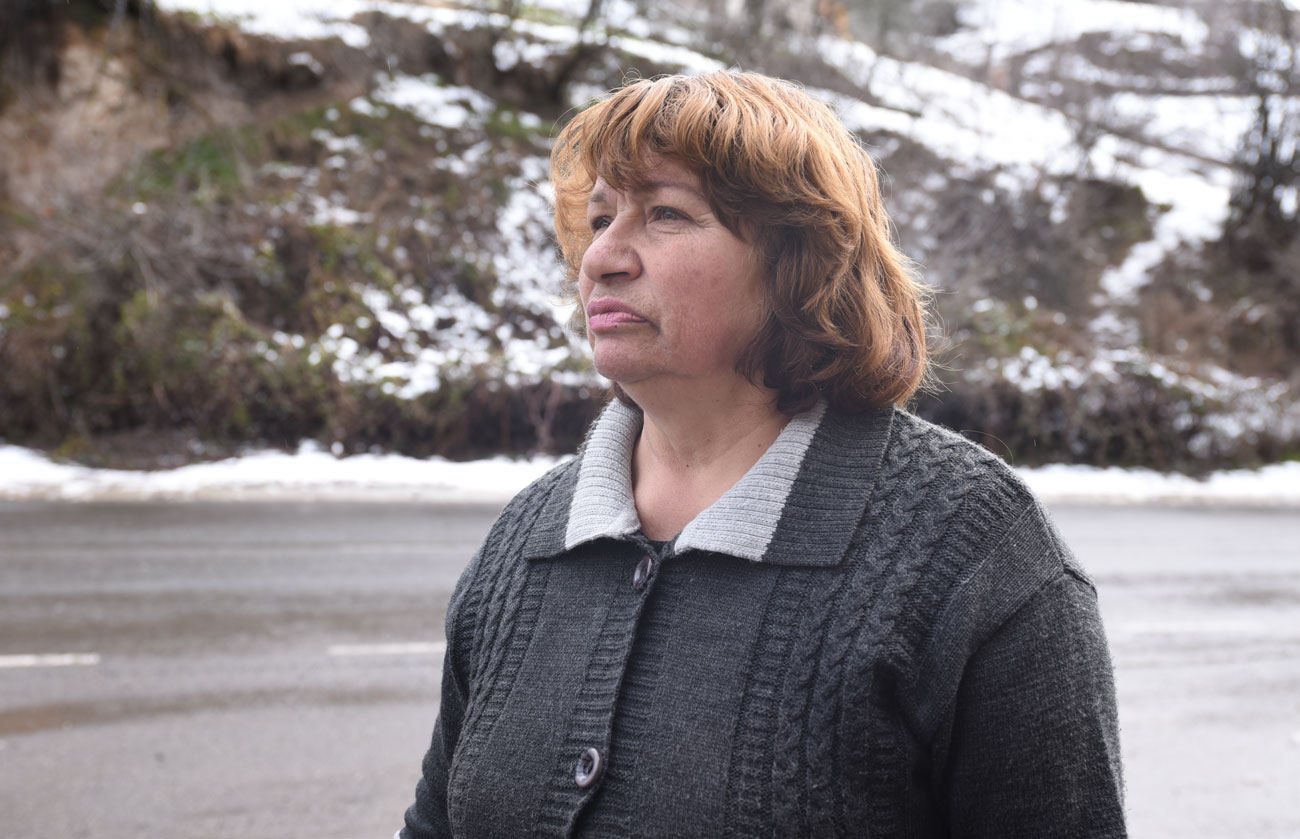
“They give that money to silence the villagers and nothing else. The village suffers terrible damage. It is called an act of almsgiving, not a donation,” says Artsvanik resident Anzhela Hovakimyan.
Chapni resident Razmik Hakobyan shares her opinion. He says it’s for shutting people’s eyes, adding that many rejoice and come to the village from different places to get the money, without thinking that no matter how much money they have, they will not be able to cure their children down the road.

Artur Grigoryan says that in any case it should be taken into account that mining is the use of publicly owned resources, the proceeds or profits of which should be used more transparently, including social assistance, allocations to media or various public associations, etc.
Grigoryan believes that it has to be possible to obtain accessible and detailed information on all of this, then understand whether it is lawful, ethically correct, internationally accepted or not.
If most of the residents of Artsvanik and Chapni talked to us, expressing their concern and dissatisfaction with the impact of the tailings dump and its expansion despite the money they get, we met only a few complaining in Sevakar.
"How many years has the tailings dump been there? Has the impact that you are so interested in just started? It's just a tailings dump, it's a normal thing, it's for waste," says Armen Davtyan, the administrative representative of Sevakar and Chapni villages.
Empty-Handed Villagers Complain
The ZCMC does not provide financial assistance to the residents of Achanan and Syunik villages.
63-year-old Marat Harutyunyan from Achanan says it is unclear why they do not receive the money, given that the village is very close to the tailings dump. The distance between the last houses of the village and the dump is less than 800 meters.
Marat Harutyunyan says that the more the ZCMC's production increases, the more they feel the damaging impact of the tailings dump.
“Our beans had a great reputation. The village used to sell crops in Kapan. Now people go to the town to buy beans and other agricultural products, since there are none here. Even if there is a crop, it’s mutated: persimmons may look weird, as well as tomatoes. The scary thing is that we do not know. At least they could call in specialists to see what’s the danger,” says Harutyunyan.
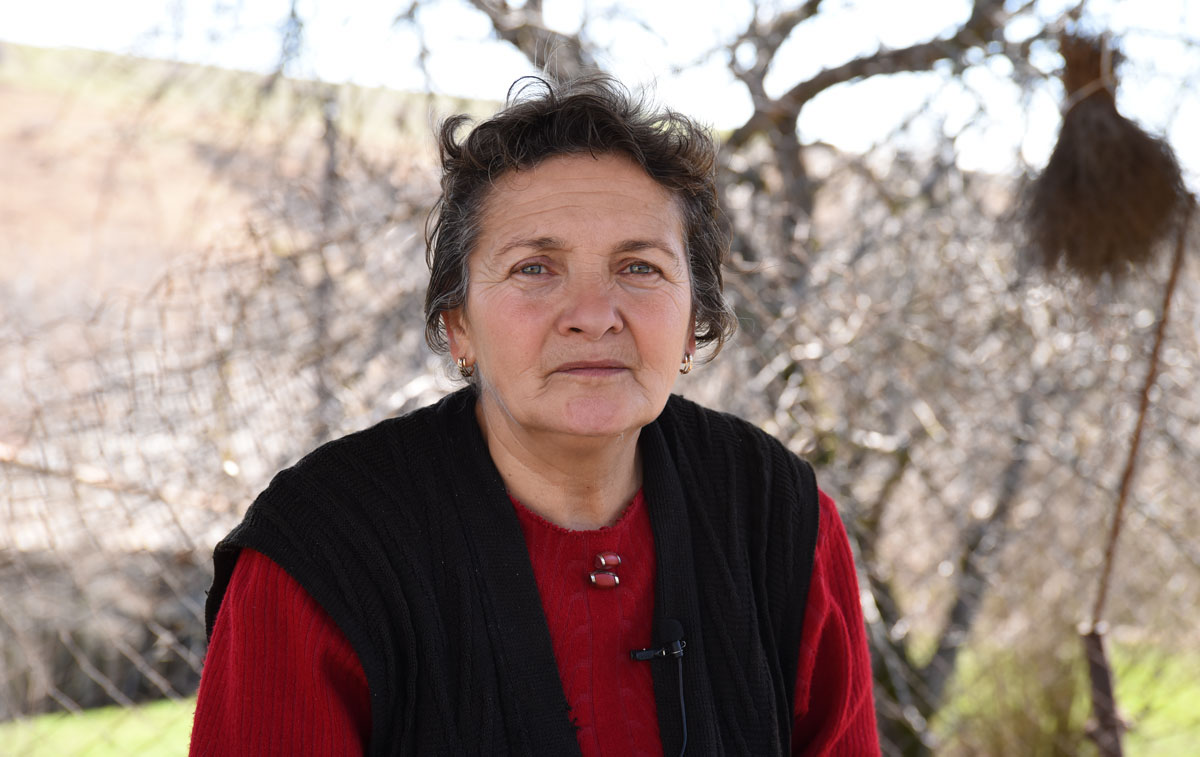
The house of 60-year-old Emma Vardanyan is 900 meters from the tailings dump. She says that they feel direct harm both on their health and on the crop yield.
Achanan administrative representative Gagik Harutyunyan says the village has not been cultivating eight hectares of land in the immediate vicinity of the dump for two years, since the crop got worse.
Achanan applied to the ZCMC and Kapan Municipality for financial support.
Gagik Harutyunyan says that instead of donations, the villagers were presented with an offer to resolve the school's gasification, irrigation and road improvement issues, and to open a sewing workshop in the village.
The representative says such projects are more efficient because it is not known how much time they will pay the money, while water, roads, gas will be sustainable. However, the villagers insisted on the donations, rejecting other offers.
Artur Manucharyan, the Syunik village administrative representative, says that Syunik residents have come to an agreement that the combine will do different things for the village, such as renovating the village kindergarten building, football field, and so on.
Planned Expansion of the Tailings Dump
In April 2011, the government of then Prime Minister Tigran Sargsyan decided to recognize 608 hectares of land (owned by communities and residents) in Kajaran, Artsvanik, Chapni, Sevakar, Achanan and Syunik villages of Syunik Province, as eminent domain, so that they could change the land category to industrial, subsoil and other ones and lease it to the ZCMC for mine development.
The decision sparked widespread protests in the communities mentioned above, particularly in the village of Kajaran, where even the village cemetery was in the eminent domain list.
The 2011 decision was not subsequently amended or revoked, but it was not implemented due to the community backlash.
On May 21, 2015, Prime Minister Hovik Abrahamyan's government adopted another decision. In fact, it is mostly copied from the 2011 decision.

The government decided to take 492 hectares of land (state, community and private ownership) from the communities of Artsvanik, Chapni, Sevakar, Achanan and Syunik. This decision is also based on "overriding public interest". The government noted that the copper and molybdenum mining program “outweighs the interests of landowners”, as it is of national importance, the program will ensure significant growth of the RA industrial production and export volumes, will greatly enhance economic and social security and development of the country.
Thus, the government decided to buy 492 hectares of land from the owners through ZCMC funds and make them community owned. After acquiring the land, the government proposed to the mayors of the five villages to change their zoning to the industrial, subsoil and other production significance.
Afterwards, according to the decision, the community leaders would be allowed to give the land with the right of construction to the ZCMC, without announcing any tender. Since these five villages were merged with Kapan in 2017, it is now the Kapan Municipality that is responsible for implementing the government's decision.
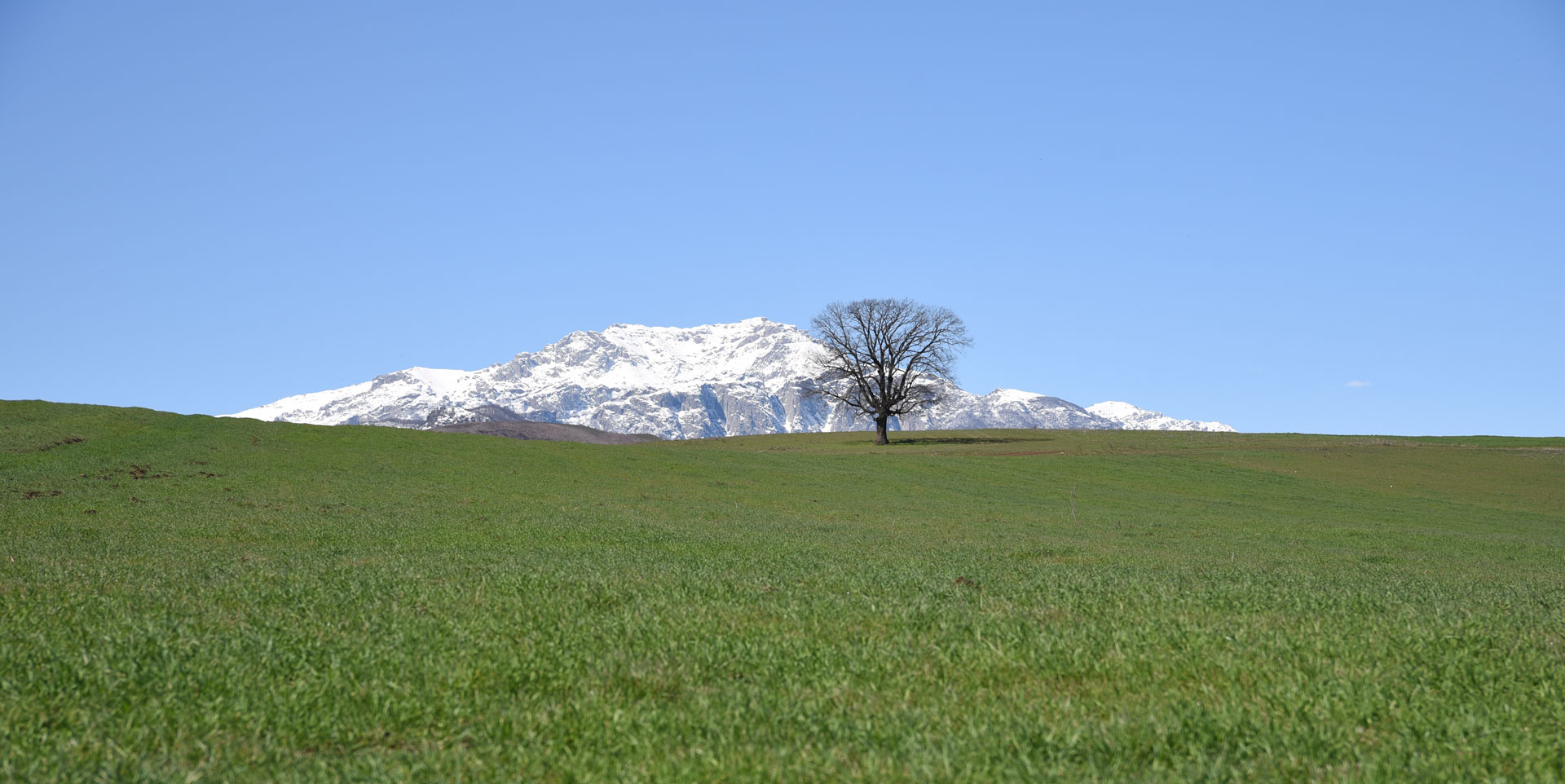
However, in 2018, following the change of national government, the Kapan Municipal Council, under pressure from Kapan environmentalists and residents of the mentioned villages, did not discuss the change of the land zoning.
The situation changed when non-partisan Gevorg Parsyan was elected mayor of Kapan in October 2018. In December, at his suggestion, the council decided to approve the category change of the 390.5 hectares of Artsvanik, Chapni and Sevakar villages. However, that’s only the beginning of the process.
Parsyan told Hetq that a land case was drawn up in the municipality on 256 hectares and submitted to the relevant authorities for further discussion. If a positive conclusion is reached, the issue of changing the land category will be referred to the council for final approval. Parsyan also informed us that the ZCMC fully financed the acquisition of the land, paying the former owners more than 337 million drams. That is, it remains for the Kapan community to change the zoning and operational uses of the land and provide it to the combine with the right of construction.
67-year-old Seyran Hovagimyan is one of the 24 residents of Sevakar whose lands were bought. He sold 250 square meters of arable land to the community for the needs of the combine and received 375,000 AMD. He says he had to do it since everyone else did it.
The Tailings Dump Covers Land Not Allocated to the Combine
Hetq has regularly written about wastewater discharges from the Artsvanik tailings dump. As a rule, it happens several times a year.
The water that flows from the tailings dump into the Norashenik River exceeds the permissible concentration of the waste materials several times. Some environmentalists even suspect that the ZCMC might be unloading the rapidly filling tailings dump this way. The Ministry of the Environment (formerly MNP) has been supportive of the combine for years, hesitant to publish complete information about the combine’s environmental violations and penalties.
The Inspectorate for Nature Protection and Mineral Resources (INPMR) started inspections at the ZCMC in 2018, the results of which were published earlier this year.
Among the numerous violations revealed, it was reported that the Artsvanik tailings dump covered 18.55 hectares of community and state-owned land in the Artsvanik, Chapni and Sevakar villages that had not been transferred to the combine. The INPMR once again recorded wastewater leakage from the tailings dump.
Hetq wrote that during the waste leakages, the tailings accumulate in the immediate vicinity of the Norashenik River and have not been transported to the tailings dump for years, posing an immediate environmental threat.
As a result of the inspections, the INPMR came up with a 382 million dram fine to be paid by the ZCMC, to which the latter did not object.
We asked the ZCMC about the environmental projects implemented in the five adjacent villages - Artsvanik, Chapni, Sevakar, Achanan, Syunik.
"In the affected communities, the Company implements all measures foreseen by its Environmental Impact Assessment Report and its expert conclusion, the Company's Environmental Management Plan, including monitoring of the drinking water, CO2 and SO2 gases, surface water, ecosystems and biodiversity management with various indicators, human health impact assessment, landscaping and providing seedlings,” wrote Mher Poloskov, adding that studies are being carried out on the design and installation of clearing stations for the Norashenik River.
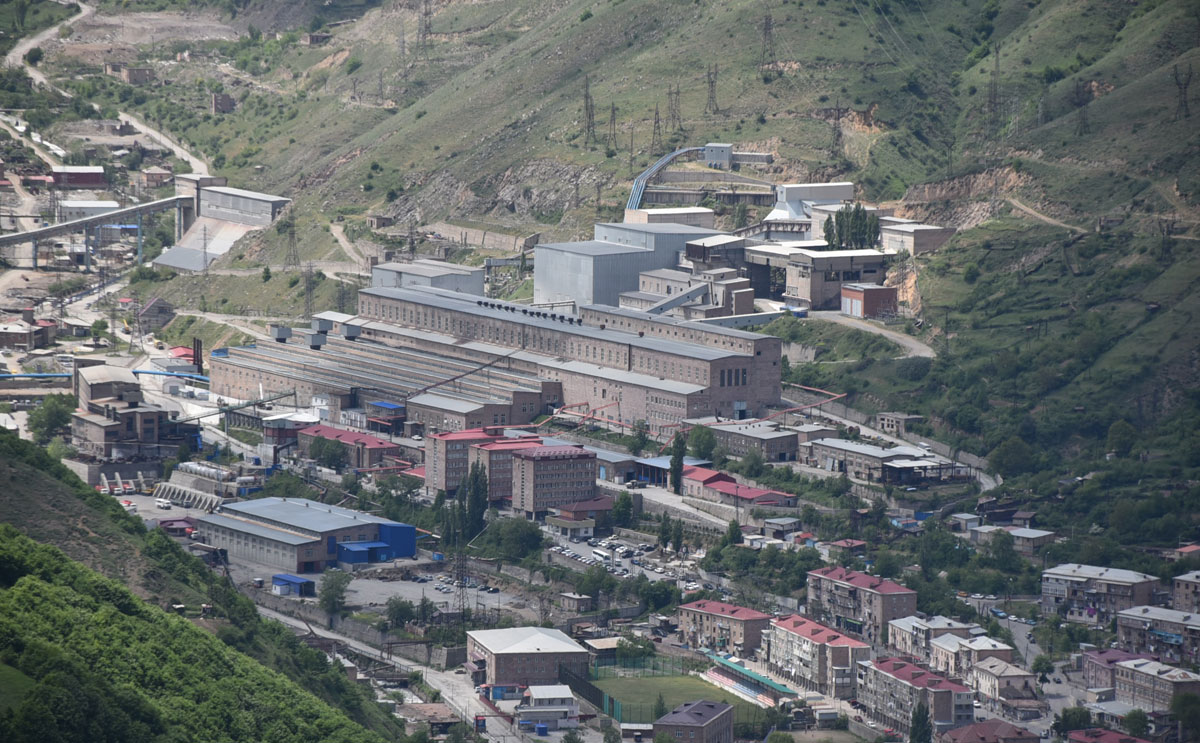
As for environmental protection payments, according to State Revenue Committee reports, the ZCMC paid 45 million drams in 2016, 56 million drams in 2017, while the data for 2018 are missing. This is not only for the tailings dump, but also for the other activities of the combine.
Kapan Mayor Gevorg Parsyan says around 1,500 residents of the enlarged community work at the combine.
New Tailings Dump Issue
According to the ZCMC's CEO, there are 11-12 million cubic meters of waste loaded in the tailings dump each year. At this rate, the tailings dump, which already has 240 million cubic meters of waste, will reach its projected volume (325 million cubic meters) in the next seven years. But if the volume reaches 398 million cubic meters, the life of the tailings dam will be prolonged for another 6-7 years.
The mine operator, however, has already started searching for a site for a new tailings dump, and to develop and analyze technical solutions.
General Director Mher Poloskov told Hetq: “Upon instructions of the company, the prestigious SRK Consulting (UK) Limited has conducted preliminary studies and provided suggestions on possible options for tailings dump. Work is still ongoing with the designated authorities on the organization of the design process for the new tailings dump.”
According to rumors circulating in Kapan, the areas of Bargushat and Vardavank villages east of Artsvanik are being considered for the future tailings dump. Bargushat Gorge is just north of the village of Syunik.
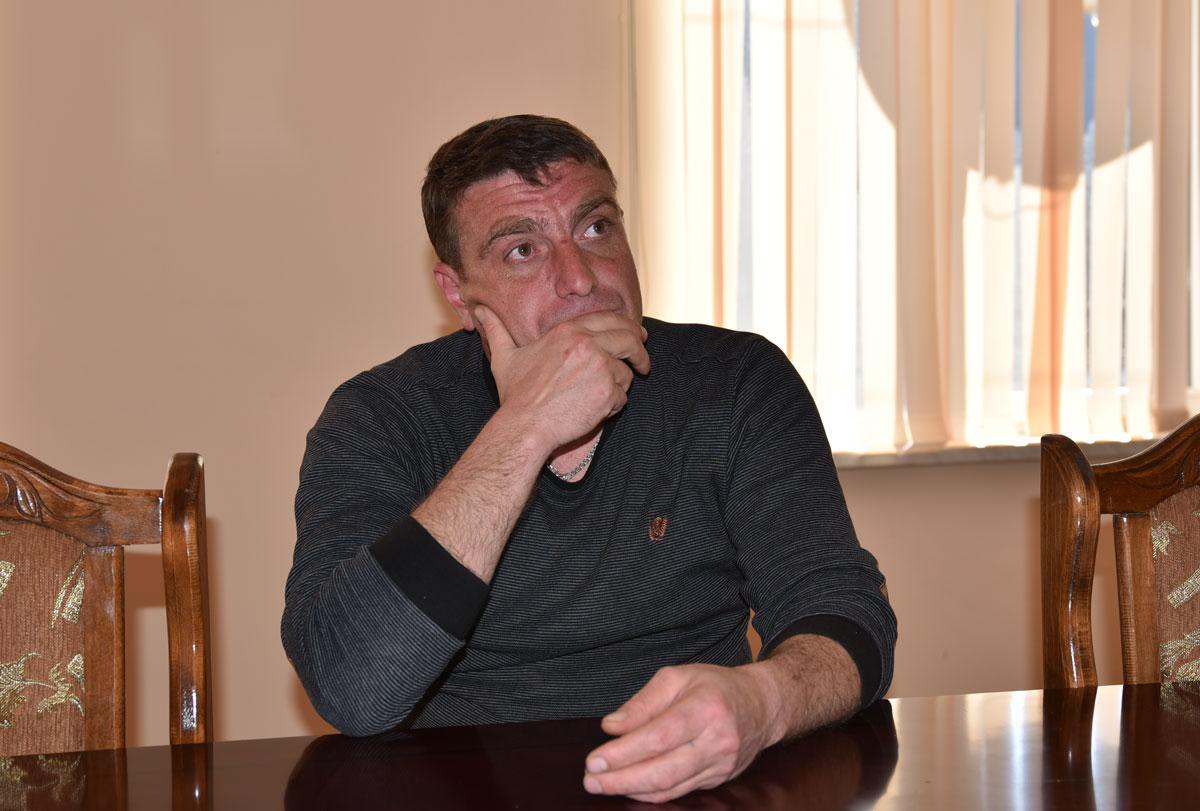
Artur Manucharyan, Syunik's administrative representative, says that 15 hectares of land were allocated to the ZCMC a few years ago for that purpose, but the project was suspended.
According to Manucharyan, if tailings are accumulated in this new area, their village will be directly affected. As of January 1, 2018, 51 residents were registered in Bargushat, 93 in Vardavank and 725 in Syunik.
However, Mayor Gevorg Parsyan says that according to the information provided and published by the company, no new tailings dump will be constructed within the administrative boundaries of the Kapan enlarged community.
The option of turning the gorge of the unpopulated Nerkin and Verin Giratagh settlements, incorporated in Kajaran, as a tailings dump is also being circulated. This gorge is located right next to the Yerevan-Kapan-Kajaran-Meghri highway. Kajaran Mayor Manvel Paramazyan, in a 2018 Hetq interview, denied that a new tailings dump could be built in Giratagh.
"The company isn’t discussing the construction of a new tailings dumps in the areas of Bargushat, Vardavank or Giratagh in Syunik Province," ZCMC General Manager replied. "After the Artsvanik tailings dump is maintained, a new tailings dump is planned to be designed and built in areas that were already disrupted as a result of residential and industrial activities, with advanced environmental technologies and introducing a circulating water use system."
People living near the existing tailings dump are not optimistic. The more the tailings dump grows, swallowing up new land, the more people talk about leaving their homes.
“Day and night, I ponder what will happen to us in the end. There is no area of development. We can’t say what the future will bring. I think the village should be relocated,” says 86-year-old Artsvanik resident Hrant Harutyunyan.
 Videos
Videos Photos
Photos













Comments (5)
Write a comment